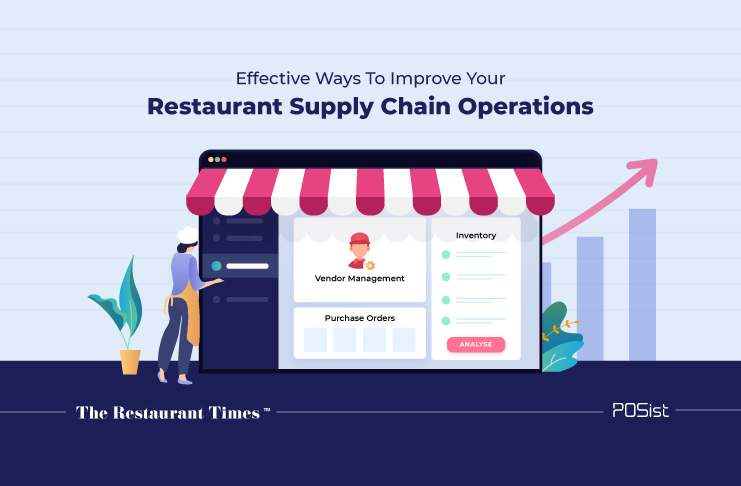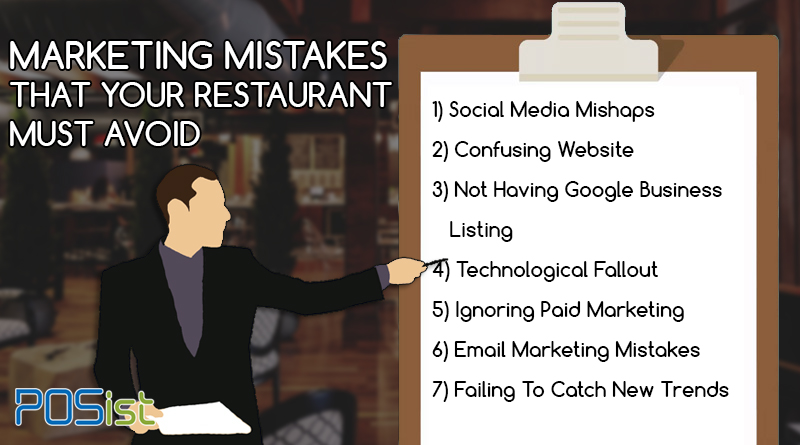With the increasing competition in the restaurant industry, customers have almost a zillion options to dine out. It takes not more than one bad experience for your restaurant to earn a bad name. This is why, it is highly essential to take care of your restaurant supply chain management so that all of your outlets are proficiently working at all times.
Inspecting The Different Aspects Of Restaurant Supply Chain Management
The smooth functioning of each of your restaurant outlets depends on how closely you pay attention to managing inventory. This means tracking actual consumption of raw material against the estimate so that it never goes out of stock. Along with that, the vendors lists need to be maintained properly, so that there is no confusion at the outlet level whatsoever. Using proper restaurant management software helps you achieve all of that through a single platform. Let’s read on to find out how.
1. Central Kitchen Management
It is often said that the working of a restaurant can be seen through how well its kitchen works. A restaurant owner needs to make sure that the kitchens have everything they need to function well. A restaurant management software could provide you with a central system to manage all your different kitchens from a single platform.
Your ideal POS should be able to give your kitchen staff a platform to make stock requests on the basis of their individual outlet requirements. The entire process of placing a stock request and getting it back on time is handled through just a few clicks. Individual outlets can raise indents that are monitored centrally, which means that you don’t need to be physically present at your outlet to look at their activity.
Once these requests have been raised by individual kitchen outlets, you should also be able to monitor the time it needs for it to be resolved. The efficient working of all the kitchen outlets individually will account for the overall enhancement of your restaurant sales.
2. Purchase Order Management
As a restaurant owner, you need to be able to track all your stock and inventory in real time. This is to ensure that your staff is not making any errors or you’re not going out of stock at any time of the day. Along with that, you should be able to monitor each of the purchases made through your restaurant management software for each of the outlets.
Managing multiple outlets is simplified through the use of restaurant POS. You could approve orders and purchases in a click and keep a track of consumption at each outlet, all on one screen.
3. Vendor Management
Managing inventory efficiently is key to controlling operating expenses and customer satisfaction. The level of ease with which you manage a relationship with your vendors plays an important role in how quickly your supply orders are fulfilled. Your restaurant operations could become imbalanced without proper synchronization between various vendors and the in-house team. Therefore, it is essential that you use a good restaurant management platform for managing your vendors, which gives you complete visibility in terms of order status, logistics and delivery schedules.
An ideal restaurant management software enables you to consolidate the names, addresses and contact information for your vendors, so that orders can be placed or modified on a priority basis. You could also keep a separate list for each of your outlets to avoid any confusion. The purchases of your raw material can also be monitored by date, type, order number, etc.
When dealing with multiple vendors, a POS can help restaurants negotiate better delivery terms, manage delivery schedules and ensure that operations continue running smoothly.
4. Stock Management
Another aspect of restaurant supply chain is stock management. Estimating demand and controlling usage of stock in hand at a restaurant with multiple outlets can be challenging. With POS, . Restaurateurs, find it really easy to have a detailed database of their raw material and stock all on one screen.
Many restaurateurs believe that inventory management is almost like the backbone of their restaurant management operations. The inventory management features of POS directly helps in deciding the food cost and engineering their menu.
“We now have better control of our inventory and have eliminated the dishes that are not doing well, all thanks to the data provided to us by the POS”, says Sakshi Rastogi, Owner, The Royal Dudes.
a) Consumption and Variance Management
Tracking consumption of stock and inventory on a regular basis definitely improves your restaurant operations and makes you better prepared for peak seasons. During lean times, it helps you utilize available stocks effectively. POS provides item-wise inventory reports that help managers and staff control food costs and improve the efficacy of back of house operations.
In cases of theft , you can focus your energy to identify the point of compromise, and have a contingency plan on how to deal with it. Interestingly, POS technology can generate. Variance reports to give you an indication of the difference between the actual food costing and the predicted food costing.
This difference could arise due to multiple reasons like wastage, lack of updation in the software or just plain carelessness. Your restaurant POS helps you identify the exact reason and thereby helps you better your restaurant supply chain operations at the very core.
b) Recipe Management
It is a challenge to keep track of all the dishes that are being sold at each of your outlets and to manage your menu according to that. The central recipe management system of your restaurant POS helps you keep track of your recipes centrally. This means that you could be sitting in the Head Office, and still keep track of the frequency of orders coming for each dish at each outlet.
For instance, if one of your outlets is selling more Shahi Paneer and the other one is selling more chicken, the raw material demand would be different. Your restaurant POS would be able to keep a track of these little details for you and let you place an order instantly, according to the database.
As a restaurant owner, you could monitor sales, and make changes in the menu centrally, if need be. You could also remove or add another dish to a restaurant according to the changing demands of the consumer in that particular outlet. All of these little things would help to increase your particular outlet sales marginally.
All in all, as a restaurant chain owner, you should monitor your stock and inventory reports to be able to proficiently manage operations. Using restaurant management software for achieving the same could turn out to be a win-win situation for both you and your employees as it saves a lot of time and contributes to a better working environment for them.

















